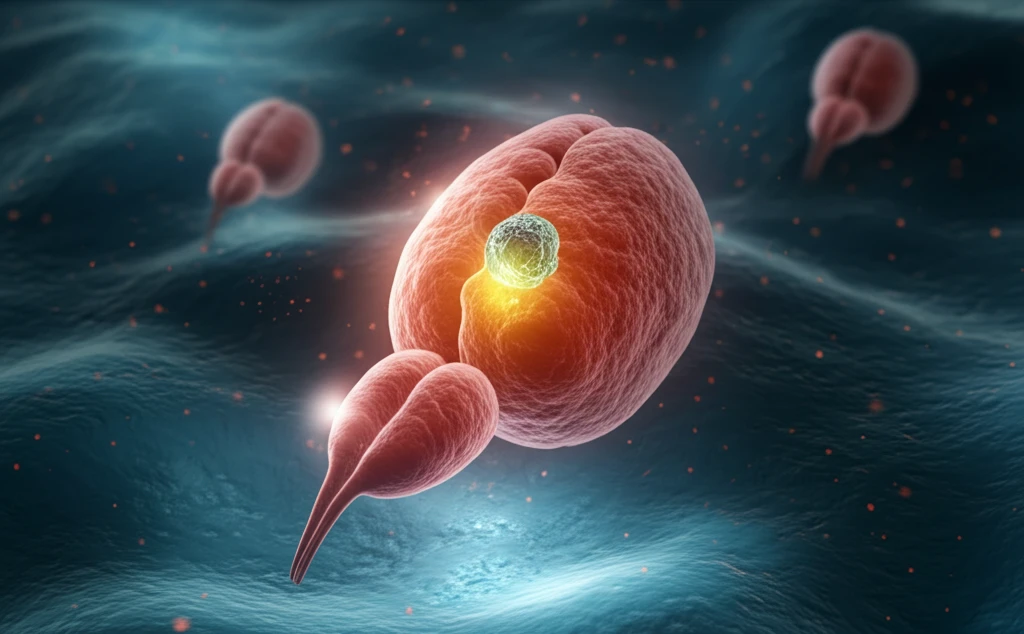
Decoding Prostate Cancer: How GCN5 Inhibition Could Revolutionize Treatment
"Scientists uncover a potential breakthrough in prostate cancer treatment by targeting GCN5 and its role in metastasis. Is this the key to stopping cancer in its tracks?"
Prostate cancer remains a significant global health challenge, ranking as one of the most frequently diagnosed cancers in men. The heartbreaking reality is that it's also a leading cause of cancer-related deaths worldwide. While advancements in treatment have been made, the high morbidity and mortality rates underscore the urgent need for innovative therapeutic strategies.
One of the biggest hurdles in treating prostate cancer is metastasis—the spread of cancer cells from the primary tumor to distant sites in the body. This process is often fueled by inflammation and the release of pro-inflammatory cytokines, creating a microenvironment that encourages tumor growth and progression. To truly conquer prostate cancer, we need to understand the molecular pathways that drive metastasis and find ways to disrupt them.
Emerging research is shedding light on the role of specific enzymes in this complex process. Interleukin-6 (IL-6), for instance, a potent pro-inflammatory cytokine, has been identified as a key player in regulating the growth, metastasis, and differentiation of cancer cells in prostate cancer and other cancers. Now, scientists are focusing on General Control Nonderepressible 5 (GCN5), an enzyme involved in various cellular processes, including gene transcription and DNA repair, potentially presenting a novel target for therapeutic intervention.
How Does GCN5 Inhibition Prevent Prostate Cancer Metastasis?

Recent studies have revealed that GCN5 is often abnormally expressed in various types of human cancer. This abnormal expression is associated with cancer development and a poorer prognosis, making GCN5 a potential target for new therapies. Researchers aimed to investigate the role and mechanisms of GCN5 in prostate cancer cells treated with IL-6 to mimic an inflammatory environment.
- Proliferation: Cancer cell growth slowed down significantly.
- Migration: The ability of cancer cells to move and spread was reduced.
- Invasion: Cancer cells were less able to invade surrounding tissues.
- Epithelial-Mesenchymal Transition (EMT): EMT, a process that allows cancer cells to become more mobile and invasive, was also inhibited.
A Promising Path Forward
This research offers hope for new, more effective prostate cancer treatments. By targeting GCN5, scientists may be able to develop therapies that not only slow down cancer growth but also prevent metastasis—a key factor in improving patient outcomes. While further research is needed to translate these findings into clinical applications, the discovery of GCN5's role in prostate cancer metastasis represents a significant step forward in the fight against this disease.
